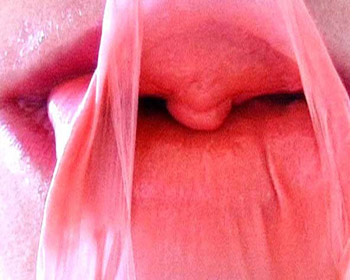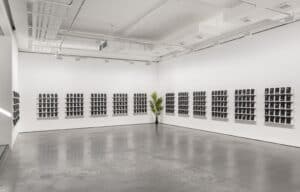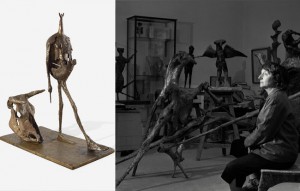
Lia Anna Henning: Eat Me, 2006
Exhibition in the Kunstmuseum Bonn from 15 March to 15 April 2007. Red, erotic, carnal, halfway between glamour and cannibalism: this is how the mouth with its impeccable white teeth filling the screen of the monitor shows itself. This work by video artist Lia Anna Hennig is one of the 48 exhibits presented at the VIDEONALE in the Kunstmuseum Bonn. Besides the latest video creations by artists such as Jeanne Faust, Christoph Girardet or Mischa Kuball, the exhibition also presents works by young artists like the Japanese Hideyuki Tanaka, who shows the strange rites surrounding a godlike figure called Jappy.
"We want to show the whole spectrum of video art today. Above all, we are interested in the appeal of the contemporary", says Georg Elben, curator of VIDEONALE 11.
HIGH-PROFILE JURY
The five-strong preliminary jury chose 48 works from the more than 600 submitted which the VIDEONALE 11 now presents at the Kunstmuseum Bonn. From these works the final jury will choose the winner of the VIDEONALE PRIZE worth 5.000 euros. This jury consists of media artist Candice Breitz from Berlin, Rudolf Frieling, curator of media arts at SF MOMA, and Susanne Titz, director of the Moenchengladbach Abteiberg Museum.
FESTIVAL PROGRAMME: Thursday, 15 March – Sunday, 18 March
Workshops, lectures by experts and artistic statements: The supporting programme of the VIDEONALE 11 deals with theoretical and practical aspects of video art. For details see http://www.videonale.org
EXHIBITION DESIGN: FULFILLING FUNCTIONAL AND AESTHETIC REQUIREMENTS
“Our aim is to present video art in an authoritative exhibition in a museum. One of the things the VIDEONALE allows us to do is to find and explore adequate forms of presentation for the particular reception requirements of video art”, says Georg Elben. The challenge was to avoid the video works overlapping each other visually and acoustically, and to steer clear of small, darkened rooms – the so-called black box.
The design by Frank Leuwer, Muna Sawas and Anke Rohlfing solved the problem by interleaving three different forms of presentation and by grouping together the works with heterogeneous content by means of identical framing. Plain cubes in black and white determine the appearance of the exhibition space. A symbolic power cord in the shape of a silver-coloured pipe system traverses all exhibition elements, guides the visitor and contains part of the wiring.
Visitors sit down on benches inside boxes resembling beach chairs and watch the video works on the back of the “beach chairs” in front. The second component consists of sound bonnets with small, integrated loudspeakers, which visitors can adjust to fit their individual height. A row of monitors with headphones is used as the third form of presentation, predominantly with those works where the visitor is meant to be isolated in order to focus on quiet, subtle sounds.
QUESTIONS AND ANSWERS: VIDEOVOICES
As an alternative to the conventional guided tours the VIDEONALE 11 introduces art in direct conversations with the help of the so-called VIDEOVOICES: art history students who have studied the contents of the VIDEONALE and who will present art in a personal dialogue.
THE STORY OF VIDEONALE 11
VIDEONALE has "… for the past 20 years had the advantage, as a quasi-film-festival for Video Art, of being able to map the current state of filmic development. This accounts for its function as an aesthetic indicator." (K.WEST)
The Videonale e.V. – founded in Bonn in 1984 – is the organiser of one of the oldest Video Festivals in the world. The festival has grown continually and since 2004 been able to use the premises of the Kunstmuseum Bonn.





